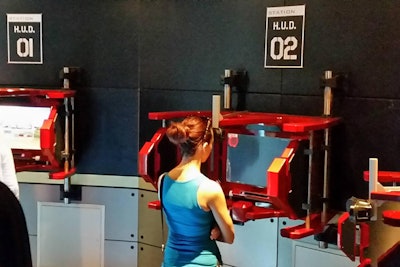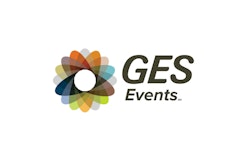
As the event and meeting industry prepares for 2015, we asked event technology professionals to tell us what’s on their minds for the coming year and beyond. Here are their predictions of the topics and tools we’ll be hearing more about.
1. Meaningful use of data
According to technology research firm Gartner, there will be nearly 26 billion wireless devices connected to the Internet by 2020. All of these devices are delivering what’s known as “big data,”—in simple terms—lots and lots of information, which for events can tell us what interests and engages attendees. Savvy planners will find ways to synthesize this data from Wi-Fi, GPS, R.F.I.D., Bluetooth low-energy, and other systems in meaningful ways. “It wasn’t so long ago that an exit survey was the primary vehicle to get data. Now you’ve got the ability, if you can pull the data pieces together, you can really tell a story. And it’s less intentional—people are voting with their actions rather than what they are telling you. And that’s always a stronger indicator,” says David Haas, director of digital solutions at FreemanXP.
For attendees, this will mean more customized experiences at face-to-face events. “In an age where we can choose from six pillow types at a hotel chain and we have radio stations customized just to our tastes, folks are less likely to settle for a one-size-fits-all situation. What resonates with an individual is having an experience that taps into their emotions and feels as if it is tailored to their particular desires and needs. We will likely see more mobile apps and solutions that provide this type of experience,” says Midori Connolly, principal at AVGirl Productions. For companies and brands, this data will be used to drive sales and marketing strategies. “With an experiential campaign you have an opportunity to establish a deeper relationship. There are generally much more tactile, emotional connections that take place, and here are psychographic insights that can create a much more cohesive picture of what your buyer is doing and what is motivating him,” says Scott Kellner, vice president of marketing at George P. Johnson.
2. Sensor integration
Beacons powered by Bluetooth low-energy will gain adoption as an easy, affordable way to engage with guests. “For example, as you walk toward the entrance of an event and as you pull your phone out of your pocket, your ticket appears on the screen and our gates are able to detect that you do have a valid ticket for the day and give you a green light to go in. You won’t have paper tickets or even an R.F.I.D. bracelet—that’s the vehicle that we use now, but if I was using people’s phones they’d be just as happy because people are guaranteed they don’t leave the house without their phones and everything is a drive to mobile now,” says Anthony Palermo, co-founder of Connect & Go.
Haas says he is interested in a new system known as “mesh beacons,” which creates a two-way communication network. “It’s a system where the beacons are more intelligent and can all talk to each other. So if you put them on a show floor they can tell where an attendee had been in the past and what that person had done previously when they were in range of other beacons, which I think has interesting potential.” Accelerometers, motion sensors, and biometric sensors will also become more common. “I think we’ll see the continued growth of sensor integration, taking everyday ordinary objects and integrating sensors into them. So people can generate digital results by handling physical objects, to round out experiences at events,” says Erik Muendel, C.E.O. of Brightline Interactive.
3. Virtual reality changing physical spaces
Thanks to Facebook’s purchase of Oculus Rift, and subsequent developments from Samsung, Google, and Sony, virtual reality is a booming business. Tech experts say the industry should expect to see new, creative ways to integrate the technology into face-to-face events. Examples include using virtual reality headsets to demonstrate products at trade shows, which can create a deeper experience for customers and also minimizes the amount of physical products that need to be brought to a show, says George Hines, chief information officer and head of innovation at Global Experience Specialists.
Virtual reality can also remove the physical limitations of an event. “The event doesn’t need to be contained in the space where it’s physically held. You can take someone to any place in the world , or create a totally new place for them. It’s like the hyperreal,” says Winslow Porter, creative technologist at MKG. In addition to those examples of individual uses, Muendel says he is getting requests to incorporate virtual reality into large event experiences. “So we need to get creative so we can broadcast from the Oculus Rift or put the individual on stage so the individual participating is actually part of the display. That is definitely bubbling up,” he says.
4. Wearable technology for event measurement
Social media is a powerful driver of both consumer and business purchasing behavior. Because of that, social media activity at events is a useful metric to demonstrate the value of a live event to sponsors, vendors, and hosts. Wearable technology such as wristbands and badges allow guests to instantly post to social media and save event content, creating real-time tracking of attendee behavior.
“A lot of what will drive the ability to measure an event will depend on how much data a customer is willing to give up about themselves. How much data they will give up is directly linked to the usability of the technology. Is it seamlessly integrated into the event and does it make their experience better? A wearable unobtrusively incorporates itself into the user’s experience and actually gives something back. And if you can show how many real-time impressions there were of your sponsorship, that is a true killer application of event intelligence,” Hines says.
5. Consolidation of tools
The silos of services will start to break down, streamlining the planning process by creating more comprehensive technology products and solutions. “Planners want simpler solutions and want to work with fewer vendors. With that in mind, event technology companies are looking beyond their core products and are looking at what other functionality they can add to their products to make them more attractive to planners,” says Jessica Levin, president of Seven Degrees Communications.
Alon Alroy, co-founder of Bizzabo, agrees and adds that this will also fulfill the need more useful post-event analytics. “The days where event organizers use upwards of five to seven different technologies to power their event will soon be over. This also means that organizers will receive a much more cohesive picture of their event’s success since data won’t be collected and stored in a wide range of tools, but rather, in a single, unified dashboard,” he says.
6. Increased eye tracking
It sounds like something out of a sci-fi movie, but in fact eye tracking has already been used successfully at events. At the Marvel Avengers S.T.A.T.I.O.N. exhibition at Discovery Times Square, visitors can browse through information and play an interactive flight simulator by looking at objects and double-blinking to select and identify various targets. “Eye tracking made leaps and bounds last year and many sensors that were in beta will be deployed in 2015 that will allow users to navigate using their eyes. It’s a very fun experience and it’s an intuitive experience,” says Muendel, whose company, Brightline Interactive, created the Marvel activation.
7. Incorporating drones
Drone technology will continue to be refined and incorporated into events, especially to capture photos and videos. “We have interest by a lot of major brands into integrating local, small-elevation drones into their footprints,” Muendel says.
8. Flexible display technologies
Porter says he knows of significant investments being made into new types of display technologies, such as thin, bendable glass that has circuitry embedded in it. “In a live event scenario, if you have access to something that weighs far less than the LCD and LED TVs that are out there, and it can wrap around a pole and is pliable, that has huge implications for how people can be engaged through displays in ways that they are not today,” he says.
9. Engaging second-screen applications
Two new second-screen services debuted in December: Bing Pulse 2.0 from Microsoft and FXP Touch from FreemanXP. Haas says planners will see broader adoption of these types of systems, which allow attendees to engage with presenters and session content in real-time using their mobile devices. These second-screen applications also deliver valuable data. “Before, event owners could qualitatively tell you a presentation was good or bad based on the amount of applause or the amount of chuckles. Now, once you have people getting this content on their devices and providing feedback, you can quantify the results of a presentation down to a presenter, even down to a slide level, and figure out where your audience is engaging and where they may be disengaging,” Haas says.



















